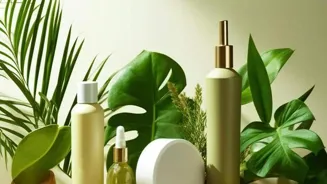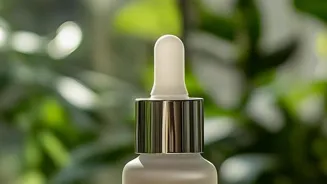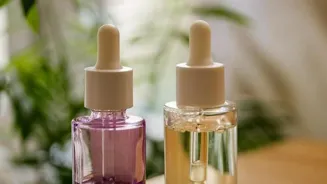Unlock the secret to glowing skin! Discover tailored skincare tips for oily and dry skin types. Read more to achieve radiant results
Hello, beautiful people! Finding the right skincare routine can feel
like navigating a chaotic Mumbai local train – overwhelming, confusing, and sometimes, you end up going in the wrong direction!
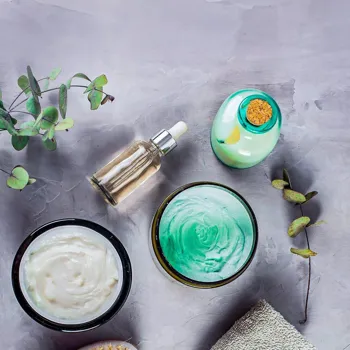
What works wonders for your bestie might leave your skin looking like a sad, oily paratha or a flaky, dry roti. This is because everyone's skin is different.
Understanding whether you have oily or dry skin, and then tailoring your skincare accordingly, is the key to achieving that radiant, healthy glow we all crave. So, ditch the generic advice and let's dive into the specifics!
For many, the quest for good skin is a lifelong journey.
Your skin type will determine which products are suitable for your skin. Using the wrong products can cause issues like pimples, rashes or dryness. So, how do you find the correct one for you? Let's see how.
Identifying Your Skin Type: Oily or Dry?
First things first, detective work!
Are you constantly blotting away shine, or are you battling dry patches and tightness? Oily skin tends to be shiny, especially in the T-zone (forehead, nose, and chin), and prone to breakouts. Dry skin, on the other hand, feels tight, itchy, and can even flake.
A simple test: Wash your face with a gentle cleanser and leave it bare for an hour. Observe how your skin feels. If it's shiny, you likely have oily skin. If it feels tight and uncomfortable, you probably lean towards the dry side. Combination skin has both oily and dry areas.
After you have determined your skin type, you can choose products to enhance your glow. Products are typically labelled as the specific skin type that they are suitable for.
Oily Skin: The Shine Control Squad
Dealing with oily skin in India’s climate can be a real challenge!
The heat and humidity can exacerbate oil production, leading to clogged pores, blackheads, and acne. The goal here is to control shine without stripping away essential moisture, which can actually trigger even more oil production.
When it comes to oily skin, finding the right cleanser is paramount.
Start with a gentle, foaming cleanser that contains ingredients like salicylic acid or tea tree oil. These effectively remove excess oil and unclog pores without being overly harsh. Avoid cleansers with heavy creams or oils, as they can exacerbate oiliness.
After cleansing, use an alcohol-free toner to further remove any remaining impurities and balance your skin's pH. Look for toners containing ingredients like witch hazel or green tea extract, known for their astringent and antioxidant properties.
An alcohol-free toner ensures that your skin doesn't become dry, which could promote further oil secretion.
Remember to exfoliate one to two times a week to remove dead skin cells that can clog pores. Look for chemical exfoliants like glycolic or lactic acid, which are gentler than physical scrubs.
If you prefer a physical scrub, choose one with fine, biodegradable beads to avoid micro-tears in the skin. Many people with oily skin are scared of moisturizing, but hydrating is essential. Choose a light, oil-free, and non-comedogenic moisturizer.
Gel-based moisturizers are a great option as they absorb quickly and don't leave a greasy residue. Look for moisturizers that contain hyaluronic acid, a humectant that draws moisture from the air into your skin. Never skip sunscreen!
Choose a broad-spectrum, oil-free sunscreen with an SPF of 30 or higher. Sunscreen helps to prevent against skin damage and protects your skin from ultraviolet beams.
With the correct routine, oily skin can start to look fresh and glow!
Cleanse your face and use the right products as part of your routine and see visible positive results.
Dry Skin: The Hydration Heroes
Dry skin feels like a desert – parched, tight, and often itchy. The key here is to replenish moisture and create a protective barrier to prevent water loss.
Gentle hydration is critical to maintaining hydration!
Start with a creamy, hydrating cleanser that won't strip your skin of its natural oils. Avoid foaming cleansers and those containing harsh sulfates.
Look for cleansers with ingredients like glycerin, ceramides, or shea butter, which help to moisturize and soothe the skin. After cleansing, use a hydrating toner to prep your skin for the next steps in your routine.
Look for toners containing ingredients like hyaluronic acid or rosewater, which help to hydrate and soothe the skin. Exfoliate once a week to remove dead skin cells that can prevent moisture from penetrating the skin. Choose a gentle physical exfoliant or a mild chemical exfoliant like lactic acid.
Focus on deeply hydrating serums containing ingredients like hyaluronic acid, ceramides, or squalane. These ingredients help to attract and retain moisture in the skin.
Moisturizers should be your best friend. Choose a rich, creamy moisturizer that contains emollients and occlusives.
Emollients like shea butter and cocoa butter help to soften and smooth the skin, while occlusives like petrolatum and beeswax create a protective barrier to prevent water loss. Don't forget your sunscreen!
While dry skin may not be as prone to breakouts as oily skin, it's still important to protect it from sun damage. Choose a broad-spectrum sunscreen with an SPF of 30 or higher. Sunscreen assists with protecting the skin and hydrating it at the same time.
You can also use oils on your face for a hydrating boost!
With a consistent routine, dry skin can look dewy and fresh!
Essential Tips for Both Skin Types
No matter your skin type, here are some universal skincare rules to live by:
Stay Hydrated: Drink plenty of water throughout the day. This helps to keep your skin hydrated from the inside out.
Get Enough Sleep: Aim for 7-8 hours of sleep per night. Sleep helps to reduce stress, which can exacerbate skin problems.
Eat a Healthy Diet: Consume a balanced diet rich in fruits, vegetables, and whole grains. These are really important in improving your skin health.
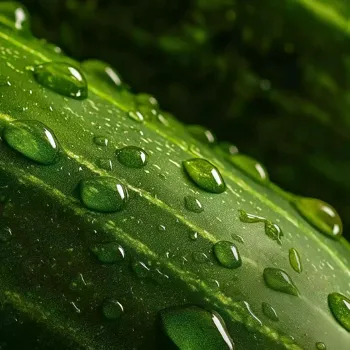
Manage Stress: Practice stress-reducing activities like yoga or meditation.
Be Patient: Skincare takes time. Don't expect to see results overnight. Be consistent with your routine and you will eventually see improvements.
DIY Remedies: Desi Solutions
Okay, let's add a little desi twist! After all, our grandmothers always had amazing home remedies.
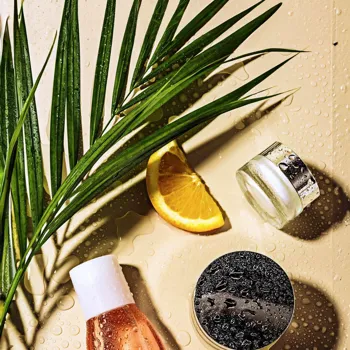
Oily Skin: Multani mitti (Fuller's earth) mixed with rose water can help absorb excess oil and tighten pores. Apply as a mask for 15 minutes then rinse.
Dry Skin: A honey and milk mask can provide intense hydration and soothe dry skin. Apply for 20 minutes then rinse.
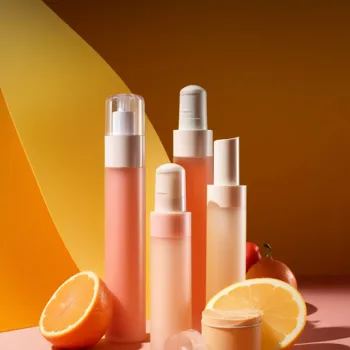
Remember to patch-test any DIY remedy before applying it to your entire face to avoid allergic reactions.
It is always a good idea to perform research before trying new remedies and products! DIY solutions do have side effects and it's important to be careful. Please do consult your dermatologist before proceeding.
Skincare: It's a Journey, Not a Destination
Taking care of your skin is a continuous process that requires attention, patience, and understanding. What works today might not work tomorrow, as your skin's needs can change due to factors like weather, hormones, and stress levels.
So, be observant, adjust your routine as needed, and don't be afraid to experiment (within reason, of course!).
Skincare can feel like a chore at times but with time and the right products, it will become a habit that makes you look and feel good!




